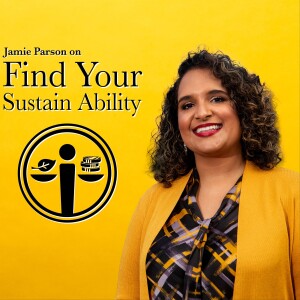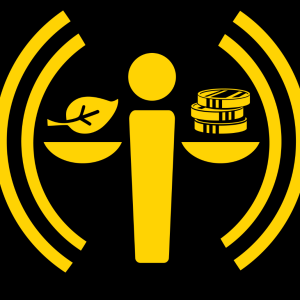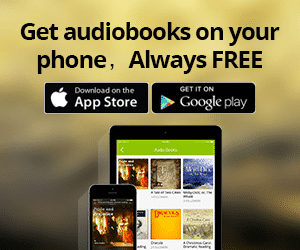
014 Jamie Parson on the goals and challenges of in the work of diversity, equity and inclusion
 2022-06-23
2022-06-23
Host Dr. Lee F. Ball visits with App State Chief Diversity Officer Jamie Parson. The two discuss her experiences in the world of insurance and academia. Parson shares goals for her position as chief diversity officer and defines some of the greatest challenges to her work in diversity, equity and inclusion on App State's campus.
Transcript
Lee Ball:
Welcome to the podcast, Find Your Sustainability, where we discuss complex sustainability issues with experts from a variety of perspectives. Today, I would like to welcome Jamie Parson, Chief Diversity Officer here at Appalachian State University. Jamie was an associate professor in the Department of Finance, Banking and Insurance at App State, where she taught undergraduate courses in business law and insurance. In addition, she led the Walker College of Business' Inclusive Excellence Team, formerly Diversity Advisory Team, as well as the Risk Management and Insurance Diversity Initiatives in the Brantley Risk and Insurance Center. She also serves on numerous boards and committees, including the university's Diversity and Inclusion Accountability team. Jamie, welcome to our podcast.
Jamie Parson:
Thank you.
Lee Ball:
Can you tell me a little bit about what led you to the role of chief diversity officer?
Jamie Parson:
Yeah, so I think much of my diversity and inclusion work started when I was younger. I was in the youth NAACP when I was in high school. And when I got to college, I was one of 7% underrepresented students in my undergraduate institution, and being a part of a multicultural student organization was really important to building communities. So I was a part of a group called The Meeting of Students Addressing Intercultural Concerns. And then when I went to law school, I became involved in our Black Law Student Association and our Multicultural Law Student Association. And I think being involved in those programs when I was in college really led me to find a lot of value in those in my career. So when I went to working at State Farm, I had the opportunity to participate in employee resource groups, which I found were really valuable. Before I went back to State Farm, I was also a Title VII investigator. And then when I got to this position here at Appalachian, being able to do diversity and inclusion work just seemed like a natural fit for continuing in my career.
Lee Ball:
Yeah. Like me when I was young, the chief sustainability officer wasn't a thing and I don't think chief diversity officers were a thing, but we just kind of fell into these roles.
Jamie Parson:
Absolutely.
Lee Ball:
Well, you certainly deserve it. You have a lot of experience and it's always been great working with you.
Jamie Parson:
Thanks.
Lee Ball:
Can you expand on your experience teaching and working in the Walker College of Business?
Jamie Parson:
Yeah, so I was hired to teach primarily the legal environment of business course, which is a introduction course to law for all business majors, had the opportunity to then start working in teaching some of the insurance courses. So I taught a personal insurance course and then had the opportunity to participate in the rollout of the employee benefits minor, which is the first employee benefits minor in the entire nation. So getting the opportunity to teach in the College of Business, it's a lot about innovation and what kind of creative, practical things you can bring to the classroom, which is a model I really like. Because I see such value in bringing those practical experiences to students rather than spending a lot of time talking about high level theories and things that they can't necessarily relate to, thinking about how we take some of those theories and put them into practice.
Lee Ball:
Are you seeing students in the College of Business really valuing the employee experience, just the people part of the business community?
Jamie Parson:
Absolutely. I think that hands on experience gives them the opportunity to see the real life implications of the work that they're doing. So in the insurance space, they get to see how businesses use insurance and how they benefit from insurance. And they get to see the real life response that happens when a crisis happens and they need to call on their insurance company to come to provide coverage. I think getting the opportunity to see that in all the different stages of that process is really important for them understanding why they're taking the classes that they're taking.
Lee Ball:
How did your previous and recurrent research connect to your DEI work?
Jamie Parson:
I don't think it's a direct line. My research is primarily in insurance regulation, so not really a direct connection to diversity, equity and inclusion work. But I think the connection to policy law, navigating political atmospheres really to bring people together is where my work and research really aligns with diversity, equity and inclusion. Most recently, I've had the opportunity to bring some of my colleagues together to write a paper on gender identity and auto insurance. And so that's been an exciting opportunity and exciting chance for me to pull all of my worlds together.
Lee Ball:
Well, certainly understanding policy and politics helps you in your current role.
Jamie Parson:
Absolutely.
Lee Ball:
You helped with the passing of the North Carolina Foster Care Family Act in July of 2015. Can you tell us a little more about how you became involved with that process?
Jamie Parson:
So before I came to Appalachian, I was a foster parent for a couple of years. And when I came to Appalachian, the Department Chair, Dr. David Marlett was also serving as a foster parent, and like many insurance experts, starts to take a deep dive into whether or not he has insurance coverage for different scenarios and hypothetical situations. And he realized that there was a gap in the homeowner's policy that if I'm an insured and my kids are considered insured, so would my foster children be considered insureds. And in a homeowner's policy, insureds can't sue each other in a liability coverage. And so if a foster child's biological parent was disgruntled with the foster parent or the foster child got injured on the property, there wouldn't be any insurance coverage for any lawsuits that came to the foster family by the foster children's parents. And so that gap in coverage really left an exposure for maybe more affluent potential foster parents who might be able to provide really great experiences for foster children who might not be interested in getting into foster care because of that exposure.
Jamie Parson:
So we saw this as a really important opportunity to get involved in some of the conversations that were starting. Senator Barringer who's now a judge, was also a foster parent and she, along with some other folks sponsored a bill to figure out how we could support foster families, but also thinking about foster children. There was also a gap for foster children in getting coverage for car insurance. Because if you can imagine as a foster parent, well, as a parent, I barely want to ensure my own children, because my insurance goes up so much. And as a foster family, whether or not that's cost prohibitive, if you've got three or four teenagers living in your home, you wouldn't be able to necessarily ensure them. And so then they age out of the system without having any experience driving.
Lee Ball:
So you're definitely focused on just eliminating the risk, both of the foster child and the caregivers?
Jamie Parson:
Yeah. And I think it's not so much eliminating the risk, but providing some coverage in spaces where we didn't traditionally have coverage for these types of scenarios and thinking about how we can create a better and more equitable pathway for children aging out of the system that don't necessarily have access to car insurance from their parents car insurance. Because otherwise, when a 16 year old starts driving, the reason their premiums are so high is because they're an inexperienced driver. When they get to be 18 and age out of foster care, if they got their license at 18, they'd still be paying that same high premium because they wouldn't have any years of experience.
Lee Ball:
Sorry, I'm just reflecting on my son's premiums, and why they're so high. He didn't start driving until he was 18.
Jamie Parson:
Yeah, my daughter started driving when she was 16 and I think we drive older cars and it was still a very significant increase. And so I can't imagine trying to ensure multiple teenagers at one time, let alone multiple teenagers that I don't always have 24/7 visual on because they maybe go for visits with their family and just that increased exposure. And some foster children bounce from house to house. So they don't necessarily have a consistent home to even establish and build a relationship enough with those foster families to say, "Hey, can I get a car? Can I get a insurance and a license?"
Lee Ball:
Well, it doesn't surprise me at all that you're a foster parent. You're very kind, very generous. What was that experience like?
Jamie Parson:
It was humbling, I think. When you see the experiences that some of the children in foster care have had and some of the ... I would describe resilience in their lives to be able to persevere through some of that. One of the children I had ended up graduating high school early once she came to my house and started college classes at the age of 17. So to see some of these children go through the life experiences they had, and still push through and try and do the things that we expect our "normal kids" to go through and do like graduate high school, go to college, get a job is pretty amazing.
Lee Ball:
That's really very generous of you to take that on. A lot of people, I'm sure, just can't even imagine doing that. Let's talk about sustainability and business for good, a little bit. Sustainability and DEI work are interrelated and it's known that sustainable solutions need strongly valued people in places in addition to making a strong business case. However, the business case for sustainability, it often precedes conversations about how people and places are influenced. So what are your thoughts on how to ensure that we lead with people in mind as a priority?
Jamie Parson:
I think you really have to have someone charged with that in their role. If it's not specific to someone's role, and I mean a leader like a corporate leader's role, an executive leader's role. If it's not on their radar and in their job description, there's nobody being held accountable to making sure that people are first and foremost in the organization.
Jamie Parson:
I think secondly, what I hear a lot about is the need for holistic wellness and support of the entire employee, thinking about mental health, financial wellness, and just general health management, I think is really important to demonstrating how we lead people by providing them the resources they need to be healthy and productive employees.
Lee Ball:
So here at Appalachian State, it's a pretty large business, and we have a chief sustainability officer in you. And you report directly to the Chancellor. What do you think that says about how this institution values diversity, equity and inclusion?
Jamie Parson:
What I know is that not every university has their chief diversity officer or that person that's typically like a chief diversity officer reporting to their chancellor. So to me, that speaks volumes to the type of commitment we have here at Appalachian for the work of diversity, equity and inclusion.
Lee Ball:
What are some of your big, hairy, audacious goals for diversity here at App State?
Jamie Parson:
I would say there are a couple, and I think first and foremost, going back to the people portion, we really need to be able to create an environment that is welcoming to all people, and one where people feel safe and comfortable to engage in difficult dialogues and feel like they have the skillset to do that. I don't think we'll always agree on everything, but I think it's really important for us as a higher education institution to make sure that we are providing those types of environments where people can explore their thoughts, and grow in their thoughts, and develop their thoughts because otherwise we're not really doing our job as an institution.
Lee Ball:
What are some of the biggest challenges or obstacles to our DEI work here on campus?
Jamie Parson:
I think we have about three big challenges right now. First is communication. We're dealing in a space that's in person and virtual and figuring out the best means of communication with students, faculty, and staff, and some of our community partners.
Jamie Parson:
Secondly, I think crisis management is another issue that we are facing as a challenge because there are so many different obstacles with the pandemic and navigating masks, vaccines, social justice movement, deciding what to respond to, when to respond to it, and how to respond to it, I think is a growing challenge for all of us, as we try and navigate this new space that we're living in.
Jamie Parson:
Third, I think infrastructure is a challenge. We have this chief diversity officer role and we have a lot of other areas of diversity, equity and inclusion. And trying to figure out how all those pieces really work together, we try to model after other universities, but at the end of the day, we really need to figure out what works for our campus. And that's a growing challenge as more and more people try and get into the work of diversity, equity and inclusion, which is really exciting, but it also brings about the challenge, okay, where does this new initiative fit into the grander picture of what we're trying to do?
Lee Ball:
In the case of faculty and staff retention, what can we do to help ensure our diversity goals are met in a way that deeply supports our BIPOC colleagues?
Jamie Parson:
I think taking the search process seriously and playing an active role in the search process, thinking about how we do everything from the job description, to the interview process, and thinking through every line of that work and saying, is this a skillset that we need, or do we just have that on there because we traditionally have had it on there? What barriers do we create by continuing to have that particular job descriptor on there? And asking questions in the search process, challenging each other around our biases. I think beyond the search process, reaching out to the colleagues that you have that you know are from marginalized backgrounds or maybe have invisible identities that you know of, that are struggling to find community, struggling in their teaching, research, service or in their job, and really being an active supporter of helping them find community.
Lee Ball:
You've been spending a lot of your time training campus units about diversity, equity and inclusion. Can you elaborate on that?
Jamie Parson:
So most of the training that I've been working on spends some time talking about diversity, equity and inclusion vocabulary, some of the traditional terms that we've worked with, diversity, equity, inclusion, as well as newer language, such as anti-racism, micro-aggressions, bias, identity and what all those things mean for us as a campus. And thinking about different scenarios and how we can move from just knowing the information to acting and responding when we run across situations where someone is using language that presents as bias, or is speaking in a way that comes off as a micro-invalidation, how we can interrupt those scenarios and maintain relationship in the process and interrupting in a way that's still educational because we're still an educational institution. So thinking about faculty and student communication, student to student communication, and staff to staff, communication, how those conversations are different based on who you're talking to.
Lee Ball:
So the work that you do is really difficult, I know, it's sometimes controversial. You find yourself in the middle of conflict, not everyone is aligned with their values, everyone has different experiences. So despite all of that, what is giving you hope these days?
Jamie Parson:
I think watching the younger generations of students who are in high school now who are going to be coming to college. My daughter is getting ready to go into college and I have watched her grow and I have a lot of hope for the generations coming after, that they're going to continue the work that's been started and that's really been pushed the last year. And I have a lot of hope for their ability to get things done and to make real systemic change for our campus community as well as our national community.
Lee Ball:
Jamie, thank you so much for being on the show today. If people wanted to learn more about your work and diversity at App State, where should we send them?
Jamie Parson:
I think they should visit the website, diversity.appstate.edu to keep up to date on what's going on on our campus. I would also encourage everyone to follow the monthly messages that my office puts out regarding different initiatives that we're leading and different events on campus that are taking place and some of the strategic direction we may be going.
Lee Ball:
Well, thank you so much and have a great rest of your day.
Jamie Parson:
You too.
More Episodes
 2024-09-06
2024-09-06
 2023-07-14
2023-07-14
 2023-07-10
2023-07-10
 2017-07-26
2017-07-26
 2017-07-21
2017-07-21
Create your
podcast in
minutes
- Full-featured podcast site
- Unlimited storage and bandwidth
- Comprehensive podcast stats
- Distribute to Apple Podcasts, Spotify, and more
- Make money with your podcast
It is Free
- Privacy Policy
- Cookie Policy
- Terms of Use
- Consent Preferences
- Copyright © 2015-2024 Podbean.com





